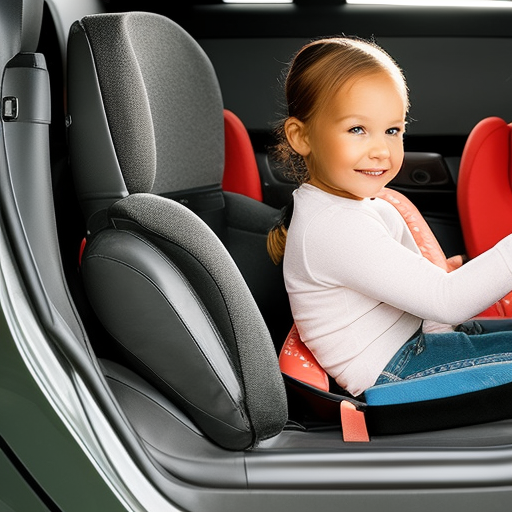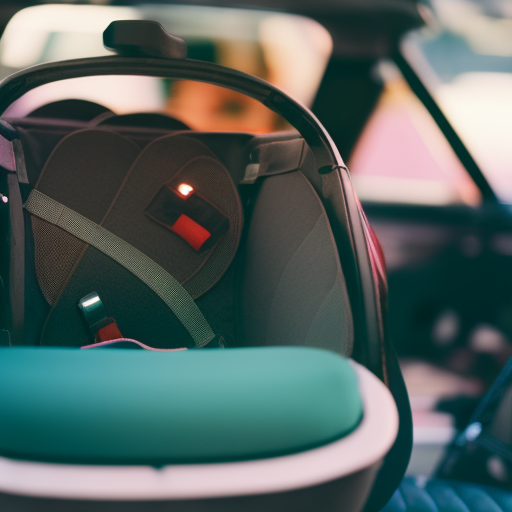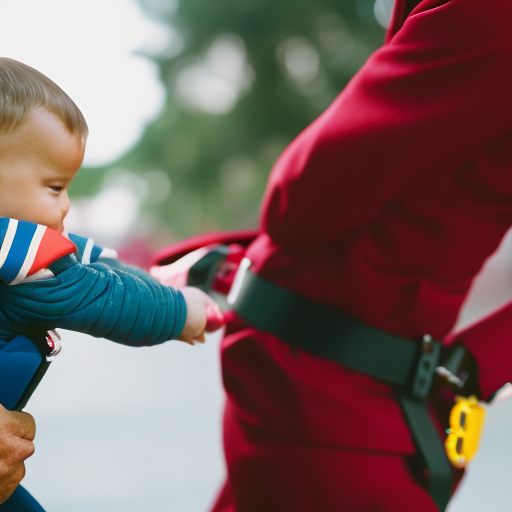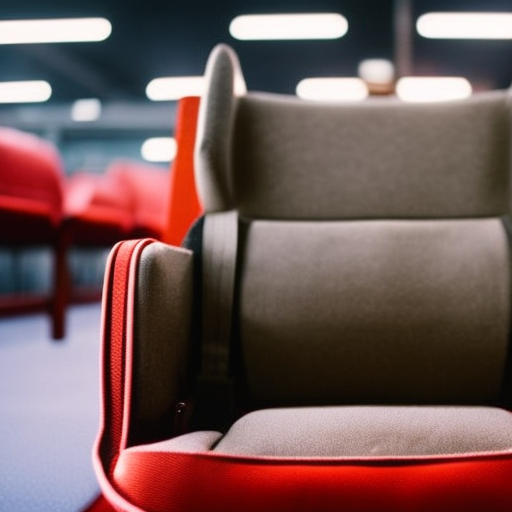"Cherishing Little Steps - A Haven for Baby and Family Journeys"
Choosing the Right Booster Seat
Are you a parent or caregiver on the hunt for the perfect booster seat? You may have heard that choosing the right one can be a daunting task. But, is it really true?
Well, fret no more! In this guide, we will explore all the factors you need to consider when selecting a booster seat for your precious little one. From age considerations to safety features, we’ve got you covered.
We’ll even dive into user reviews and ratings to help you make an informed decision. So, let’s get started on this journey together, and find that perfect booster seat that will provide your child with comfort, safety, and peace of mind.
Key Takeaways
- Transition to a booster seat at age four and comply with legal requirements for children aged four to eight.
- Ensure that the child can sit up straight and tall, with their shoulders aligned with the top shoulder belt guide or top of the seat back.
- Consider weight limitations specified by the manufacturer when selecting a booster seat, and transition to a seat belt alone if the child exceeds the weight limit and can pass the 5-step test.
- Look for booster seats with safety features such as adjustable headrests, side impact protection, energy-absorbing materials, and safety certifications like NHTSA rating or JPMA certification.
Age Considerations
When choosing the right booster seat, you should always consider the age of your child. This is because different ages require different levels of support and protection. Developmental milestones play a crucial role in determining when a child is ready for a booster seat. It’s recommended to transition from a forward-facing car seat to a booster seat once your child has reached the age of four. By this age, most children have attained the necessary developmental milestones, such as the ability to sit up straight and tall for the entire duration of a car ride.
In addition to developmental milestones, it’s important to be aware of the legal requirements regarding booster seat usage. Laws differ from state to state, but generally, children between the ages of four and eight are required to be in a booster seat. This is because at this stage, their bodies aren’t yet fully developed, and they still need the extra support and protection that a booster seat provides.
Height Requirements
To determine the appropriate booster seat for your child, consider their height requirements. Seat height plays a crucial role in ensuring a proper seat belt fit and overall safety. When your child sits in a booster seat, their shoulders should align with the top shoulder belt guide or the top of the seat back. This ensures that the seat belt fits across their shoulder and chest, rather than cutting into their neck or falling off their shoulder.
If your child is too tall for their current booster seat, it may be time to transition to a high-back booster seat or a backless booster seat, depending on their height. High-back booster seats provide additional support and protection for taller children, while backless booster seats are suitable for taller children who can sit properly without the need for a backrest.
Weight Limitations
Consider the weight limitations when selecting the appropriate booster seat for your child. It’s crucial to ensure that the booster seat you choose can accommodate your child’s growth and meets the legal requirements. Weight limitations are an essential factor to consider as they determine the safety and effectiveness of the booster seat in protecting your child in the event of a crash.
Booster seats typically have a minimum and maximum weight limit specified by the manufacturer. The minimum weight limit ensures that your child is ready for a booster seat, while the maximum weight limit ensures that your child remains safe until they’re ready to transition to a seat belt alone. It’s important to follow these weight limits as using a booster seat beyond its maximum weight limit can compromise your child’s safety.
To determine if your child still needs a booster seat, check their weight against the manufacturer’s weight limit. If your child exceeds the weight limit, it’s time to transition to a seat belt alone, as long as they can pass the 5-step test. However, if your child is still within the weight limit, it’s crucial to continue using a booster seat to ensure their safety.
Safety Features to Look for

To ensure the safety of your child, be sure to examine the safety features available in a booster seat. When it comes to choosing the right booster seat, adjustable headrests and side impact protection are two important features that you should look for.
Adjustable headrests are crucial because they provide support and protection for your child’s head and neck. As your child grows, their body proportions change, and having an adjustable headrest allows you to customize the fit and ensure that it’s at the appropriate height for optimal safety.
Side impact protection is another essential feature to consider. In the event of a side collision, this feature offers additional support and helps to absorb the impact, reducing the risk of injury to your child. Look for booster seats that have energy-absorbing materials or reinforced sidewalls to provide maximum protection in case of a crash.
When evaluating booster seats, make sure to check for safety certifications, such as the National Highway Traffic Safety Administration (NHTSA) rating or the Juvenile Products Manufacturers Association (JPMA) certification. These certifications indicate that the booster seat has undergone rigorous testing to meet safety standards.
Types of Booster Seats

When selecting a booster seat, it’s important to understand the different types available. Here are three types of booster seats you should consider:
-
Adjustable backrests: These booster seats come with adjustable backrests that can be moved up or down to provide optimal comfort for your child. This feature ensures that the seat grows with your child, offering the right amount of support and protection as they get older.
-
Portable options: If you’re constantly on the go, a portable booster seat might be the best choice for you. These seats are lightweight and easy to carry, making them ideal for travel or for switching between different vehicles. Some portable booster seats even come with a built-in carrying handle for added convenience.
-
Combination booster seats: These seats offer the best of both worlds. They combine a forward-facing harness seat with a booster seat, allowing you to transition from one to the other as your child grows. This type of booster seat provides maximum versatility and can be used for an extended period of time.
Understanding the different types of booster seats available will help you make an informed decision when choosing the right one for your child. Consider your child’s age, size, and needs, as well as your lifestyle, to find the perfect booster seat that offers both safety and convenience.
Installation Methods

To ensure proper installation of your booster seat, follow the manufacturer’s instructions and use the seat belt or Lower Anchors and Tethers for Children (LATCH) system provided. These installation methods are essential for maximizing the safety and effectiveness of your booster seat.
When using the seat belt installation technique, it’s crucial to ensure that the seat belt is properly positioned. The lap belt should be snugly fitted across your child’s thighs, not their stomach. This helps distribute the force of a crash over the strongest parts of their body. The shoulder belt should rest comfortably on your child’s shoulder, not cutting into their neck or sliding off. Make sure to lock the seat belt by pulling it all the way out and then allowing it to retract, ensuring a secure fit.
Alternatively, you can choose to install your booster seat using the LATCH system. This system uses lower anchors and a top tether to secure the seat. Refer to the manufacturer’s instructions to locate the lower anchors in your vehicle. Attach the LATCH connectors to these anchors and tighten the straps until the seat is securely in place. Remember to use the top tether to provide additional stability.
Comfort and Convenience Factors
For maximum comfort and convenience, consider the following factors when choosing a booster seat:
-
Padding options: Look for a booster seat that offers adequate padding to ensure your child’s comfort during long car rides. Opt for seats with plush padding that provides cushioning and support, reducing the chances of discomfort or fatigue.
-
Cup holder availability: Having a cup holder in the booster seat can be a game-changer, especially during road trips or when you’re on-the-go. It allows your child to have easy access to their favorite beverage, keeping them hydrated and satisfied throughout the journey.
-
Ease of use: Choose a booster seat that offers convenience in terms of installation and cleaning. Look for seats that have easy-to-use buckles and adjustable straps for a secure fit. Additionally, consider seats with removable and machine-washable covers, making it effortless to keep the seat clean and fresh.
Budget Considerations

If you’re on a tight budget, you can still find a booster seat that meets your needs and keeps your child safe in the car. When considering budget-friendly options, it’s important to compare prices and look for value for money.
Price comparisons are essential when shopping for a booster seat on a budget. Take the time to research different brands and models to find the best deals. Look for discounts or promotions that may be available online or in stores. Don’t be afraid to shop around and compare prices from different retailers to ensure you’re getting the best possible price.
Value for money is another crucial factor to consider. While it’s important to find an affordable booster seat, it’s equally important to ensure that it meets safety standards and provides the necessary protection for your child. Look for booster seats that have a good reputation for safety and durability. Read reviews and check for any safety recalls before making a final decision.
Durability and Longevity

When considering the durability and longevity of a booster seat, prioritize finding one that will withstand years of use and provide reliable protection for your child. You want a booster seat that can keep up with your child’s growth and changing needs.
To help you make an informed decision, here are three key factors to consider:
-
Durability testing: Look for booster seats that have undergone rigorous durability testing. This ensures that the seat can withstand the wear and tear of daily use, as well as any potential impacts or accidents. A sturdy and well-built booster seat will provide peace of mind knowing that it can handle any unexpected situations.
-
Lifespan evaluation: Consider how long the booster seat will last before your child outgrows it. Look for seats that have a higher weight and height limit, so that you can use them for a longer period of time. Some booster seats even come with adjustable features to accommodate your child as they grow, extending their lifespan even further.
-
Quality materials: Pay attention to the materials used in the construction of the booster seat. Opt for seats that are made with durable, easy-to-clean materials that can withstand spills, crumbs, and other messes. Additionally, ensure that the seat has a solid and secure harness system to provide maximum protection for your child.
User Reviews and Ratings

To gauge the overall satisfaction and performance of booster seats, it’s crucial to rely on user reviews and ratings. Hearing from other parents who have used the product can provide valuable insights and help you make an informed decision. Here is a selection of top recommended booster seats based on user reviews and ratings:
| Brand | Price Range | Rating (out of 5) |
|---|---|---|
| Graco | $50 – $150 | 4.7 |
| Britax | $100 – $300 | 4.6 |
| Chicco | $70 – $200 | 4.5 |
Graco, Britax, and Chicco are among the most popular and highly rated brands when it comes to booster seats. They offer a range of pricing options to accommodate different budgets. Graco, with its affordable yet reliable options, is a favorite among many parents. Britax is known for its high-quality and innovative designs, although they tend to be on the higher end of the price spectrum. Chicco offers a balance between affordability and features, making it a popular choice for many families.
Reading user reviews and ratings can give you a sense of the booster seat’s safety, comfort, and ease of use. It’s important to consider factors such as the child’s age, weight, and height, as well as the specific features you’re looking for. By taking into account both user feedback and your own requirements, you can find the perfect booster seat for your child.
Ease of Cleaning

To ensure a hassle-free experience, consider the ease of cleaning when selecting a booster seat. Keeping your child’s seat clean can be a challenge, especially when spills and accidents are bound to happen.
Here are three reasons why stain resistance and removable covers are important features to look for:
-
Stain resistance: Kids are notorious for making a mess, whether it’s spilled juice or muddy shoes. Having a booster seat with stain-resistant fabric can save you from countless hours of scrubbing and worrying about unsightly stains. It allows for easy cleanup, simply by wiping away spills or using a damp cloth. This feature ensures that your booster seat will stay looking clean and fresh, even after repeated use.
-
Removable covers: Kids aren’t known for their cleanliness, and booster seats can quickly become dirty and grimy. With removable seat covers, you can easily take them off and toss them in the washing machine for a thorough cleaning. This convenience saves you time and effort, as well as ensures that your child’s seat is always hygienic and odor-free.
-
Long-lasting durability: Booster seats with stain-resistant materials and removable covers are often made with high-quality, durable fabrics. This means that they can withstand repeated washing and still maintain their shape and color. Investing in a booster seat that’s both easy to clean and built to last ensures that you’ll get years of use out of it, providing a safe and comfortable experience for your child.
Additional Accessories and Features

You frequently encounter additional accessories and features when selecting a booster seat that enhance your child’s safety and comfort. One important factor to consider is the safety ratings of the booster seat. Look for seats that have been tested and approved by recognized safety organizations, such as the National Highway Traffic Safety Administration (NHTSA). These ratings ensure that the seat meets the necessary safety standards and will provide optimal protection for your child in the event of a car accident.
Another key consideration is the ease of use. Look for booster seats that are easy to install and adjust. Some seats come with features like a one-hand adjustable headrest or a quick-release latch system, making it simple and convenient to secure your child in the seat. Additionally, look for seats with a built-in cup holder or storage pockets, which can come in handy during long car rides.
Other useful features to look for include removable and machine-washable seat covers, which make cleaning a breeze, and a compact design, which allows for easy transportation and storage. Remember to also check the weight and height limits of the booster seat to ensure it will accommodate your child as they grow.
Frequently Asked Questions
How Do I Know if My Child Is Ready to Transition From a Car Seat to a Booster Seat?
You’ll know if your child is ready for a booster seat when they meet the age requirements and show transition readiness. Look for signs like proper weight and height, ability to sit still, and willingness to use the seatbelt correctly.
Are There Any Booster Seats Available That Can Accommodate Children With Special Needs?
Are there booster seats available for children with special needs? Absolutely! There are booster seats designed to accommodate children with disabilities. When choosing the right size booster seat, consider their specific needs for optimal comfort and safety.
Can Booster Seats Be Used in All Types of Vehicles?
Booster seats are compatible with most vehicles and can be installed easily. They provide the necessary height and safety for your child when transitioning from a car seat. Ensure proper installation for maximum protection.
What Are the Potential Risks Associated With Using a Booster Seat Incorrectly?
Using a booster seat incorrectly can have potential risks. It may not provide adequate protection during a crash, leading to injuries. Ensure proper installation, secure your child tightly, and follow height and weight guidelines for the booster seat to minimize risks.
Are There Any Booster Seats Available That Can Be Easily Transported or Used for Travel Purposes?
Are there any portable options for booster seats that can be easily transported or used for travel purposes? Yes, there are airline approved booster seats available that are designed to be lightweight and convenient for travel.
Conclusion
So, there you have it! When it comes to choosing the right booster seat for your child, it’s important to consider their age, height, and weight. Look for safety features such as a secure harness and side-impact protection.
Take into account durability and longevity, as well as user reviews and ratings. And don’t forget about ease of cleaning and any additional accessories or features that may come in handy.
With these factors in mind, you’ll be well-equipped to make a smart and informed decision for your little one’s safety and comfort.


